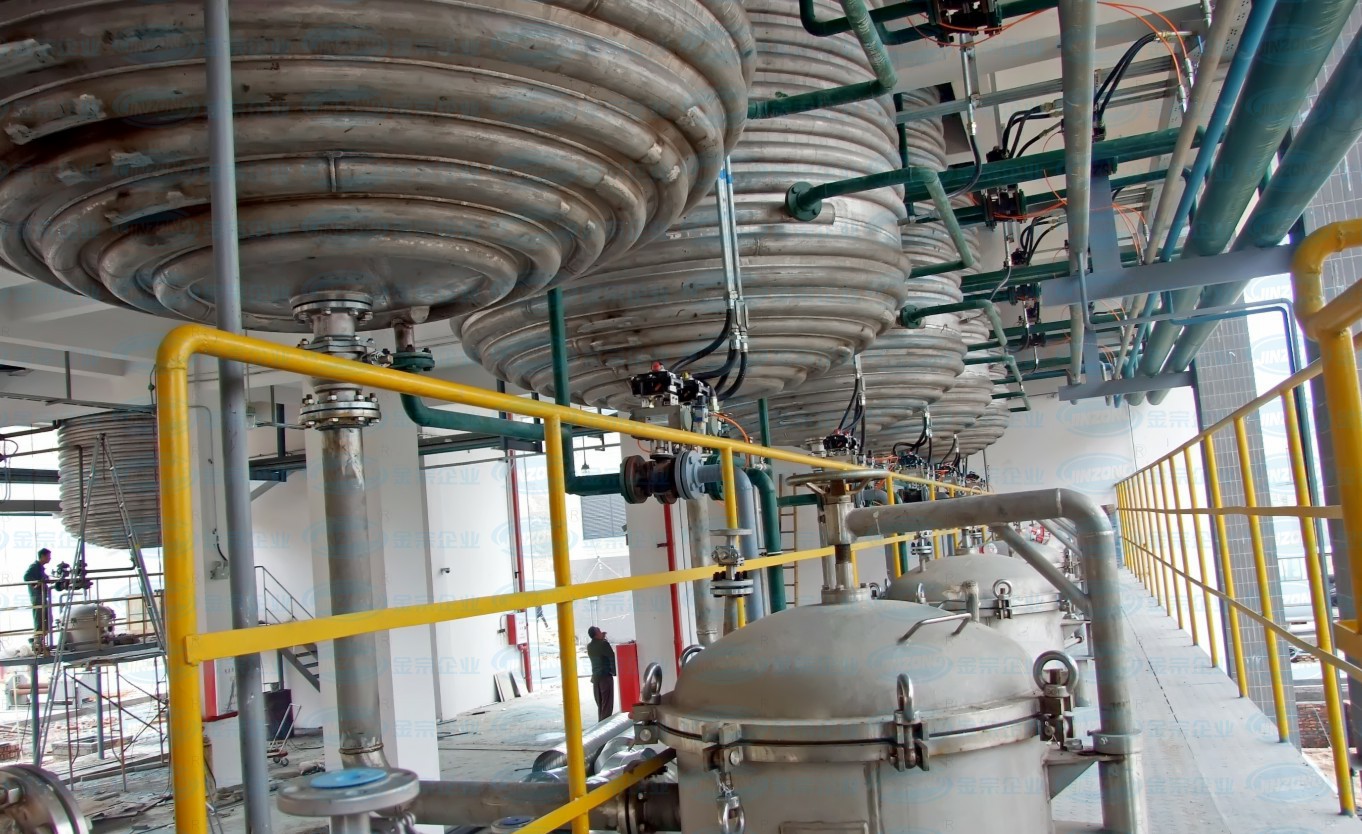As the core equipment in chemical,pharmaceutical,fine chemical production and other fields,the internal cleanliness of the reactor direactly affects the quality and production efficiency of the product.In the continuous or batch production process,the reaction material often remains on the tank wall,agitator and other accessories,forming residual glue that is difficult to remove.These residues will not only affect the reaction efficiency and product quality of the next batch,but also may cause corrosion to the equipment and shorten its service life.Therefore,it is very important to master the effective cleaning method of residual glue in reactor.Now,JinzongEnterprise will give you a detailed introduction to serveral common reactor residue cleaning technologies and precautions to ensure the safety and efficiency of the production process.

1.Physical Cleaning Method
(1)Manual Cleaning:Suitable for small reaction vessels or local residual glue. Use tools such as scrapers and brushes to directly remove residual substances attached to the inner wall. This method has high labor intensity, low efficiency, but relatively low cost, and is suitable for infrequent cleaning needs.
(2)High Pressure Water Flushing :Utilizing high-pressure water flow to impact residual adhesive is suitable for residues with good water solubility. High pressure water jet can effectively remove loose residue on the surface, but it should be used with caution when there is a risk of damage to stubborn residue or equipment.
(3)Mechanical Agitation Cleaning:Add an appropriate amount of cleaning agent and water to the reactor,and start the agitator for cyclic cleaning.It is suitable for residues with certain fludity,and the cleaning efficiency is high,but it is necessary to ensure that the cleaning agent is compatible with the materials in the kettle and avoid chemical reactions.
2. Chemical Cleaning Method
(1)Acid Alkali Cleaning:For specific types of residues, choose appropriate acid or alkaline solutions for soaking or cyclic cleaning.For example, using dilute hydrochloric acid to remove alkaline residues, and treating acidic residues with sodium hydroxide NaOH solution.Strictly control the concentration and temperature during operation to prevent equipment corrosion.
(2)Solvent Cleaning:For organic residues that are insoluble in water, appropriate organic solvents (such as ethanol, acetone, etc.) can be used for cleaning. This method has a good cleaning effect, but attention should be paid to the toxicity, flammability, and volatility of the solvent to ensure good ventilation conditions.
3. Ultrasonic Cleaning Method:By utilizing high-frequency vibrations generated by ultrasound, tiny bubbles are formed in the liquid and instantly burst, generating strong local energy to peel off residual adhesive attached to the surface of the equipment. Ultrasonic cleaning is suitable for reaction vessels with complex shapes and numerous small pores. It thoroughly cleans and causes minimal equipment damage, but the investment cost of the equipment is relatively high.
4. Cleaning Precautions
Safety First:Before carrying out any cleaning operations, the materials inside the reactor must be thoroughly emptied, ventilated, and ensure that there are no toxic or harmful gas residues.。
Environmental Protection:The waste liquid generated from cleaning should be collected and treated in accordance with environmental requirements, and should not be discharged arbitrarily.
Equipment Protection:When selecting cleaning agents, consideration should be given to their compatibility with the reactor material to avoid corrosion of the equipment.
Cleaning Validation:After cleaning, the cleaning effect should be verified through visual inspection, pH test paper or more professional detection methods to ensure no residue.
In summary, the cleaning of residual glue in the reactor is a process involving multiple physical and chemical methods. It is necessary to comprehensively consider the properties of the residue, the specific situation of the equipment, and production requirements, and adopt the most suitable cleaning strategy. Proper cleaning not only improves production efficiency, but also extends equipment life, ensuring production safety and product quality.
|
联系我们
全国服务热线 肇庆一分厂:广东省肇庆高新区(大旺)康泰街3号 肇庆二分厂:广东省肇庆高新区(大旺)建设路36号 E-mail: jinzong@jinzong.com.cn
|


